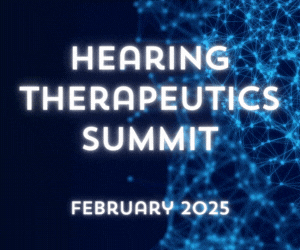Recent patent and Hearables posts alluded to augmented reality (AR) without defining the term. Audiologists think of “AR” as a professional activity called Aural Rehabilitation, not a recreational activity like Augmented Reality.
If we think of augmented reality at all, it’s as an iTunes app to beam us off the transporter pad with William Shatner. Unbeknownst to most of us, Audiologists and hearing aid manufacturers are the original pioneers of augmented reality.
Surprise, Surprise, We Were There First
Augmented reality AR and aural rehabilitation AR are so closely intertwined at their technological juncture that it’s difficult to pull them apart. How’s that? Wikipedia defines the ARs as a matched set for hearing enhancement:
Aural rehabilitation (AR) is the set of processes for “identifying and diagnosing…, providing … therapies…. and implementing different amplification devices to aid the client’s hearing abilities.” (itals added)
Augmented reality (AR) is a live direct or indirect view of a physical, real-world environment whose elements are augmented (or supplemented) by computer-generated sensory input such as sound … ” (itals added)
All those years we thought we were fitting hearing aids using manufacturers’ software algorithms and real-ear measurements. Now, we’ve come to find out that we were practicing augmenting reality for those with hearing loss. Time to update our scope of practice, add “Augmented Reality Practitioner” to our business cards and websites, and start lobbying for ARP board certification and licensure.
We’re So Far Ahead We’re Out of Sight
Hearing enhancement as augmentation is so much a part of what we do that we take it for granted, even as technological advances introduce futuristic enhancements we’ve only dreamed about. Likewise, those in the “emerging” field of AR take us for granted. One recent, interesting overview of AR technologies,1 pretty much writes off our past and present efforts compared to AR applications for other human senses:
“Aural AR gets less attention, and would appear to hold less potential for innovation. Hearing aids, after all, have been digitally enhancing our aural sense for many years…. [but] others are working on next-generation hearing aids for use by people even with normal hearing. These would allow users to focus on a particular conversation in a crowded room, or automatically block sudden, unexpected loud noises.
The quote continues (below), but Audiologists and hearing aid manufacturers may first want to take a moment to contemplate a number of points made in those first three sentences and put them in context.
- Do we have less potential for innovation because we’ve already innovated more than most?
- PSAPs already act like hearing aids for people with normal hearing.
- Hearing aid firmware and fitting software is replete with algorithms for massaging speech in noise, limiting output, targeting specific signals (e.g., music) and noise (e.g., wind), etc.
- Major hearing aid manufacturers are always working on the next generation of technology.
- Cochlear implants, surely the most impressive AR of all, do not even get a mention.
- “Others” in the quote might be Hearables innovators (e.g., Sound Hawk), but more likely are our own Big 6.
The final sentence of the quoted paragraph confirms that last point:
“As of writing, a start-up called Intelligent Headset is preparing to ship a pair of headphones by the same name with a type of aural AR it calls ‘3D sound,’ together with a variety of AR apps designed for gaming, education, and tourism.”
But Intelligent Headset is not a start-up. It’s a Jabra product, brought to market by GN Netcom, the headset and speakerphone subsidiary of GN Store Nord and sister company to GN ReSound, manufacturer and distributor of Beltone, Interton, and ReSound hearing aids.
Rediscovering and Reinventing What Came Before
From headsets to PSAPs to hearing aids, those in our field are saturated and surrounded 24/7 with augmented reality technology. No wonder we take it for granted and don’t make a big deal about it.
No wonder those in the parallel field of augmented reality tend to look past us, sometimes rediscovering us and re-inventing some technologies in the process. Next post describes a few aural AR investigations and inventions and compares them to modern day hearing aid technologies (spoiler alert: everybody benefits).
This is the 7th post in the Hearable series. Click here for post 1, post 2, post 3, post 4, post 5, post 6, or post 8.
References and Footnotes
1Wassom, B. (2014). Augmented Reality Law, Privacy, and Ethics: Law, Society, and Emerging AR Technologies. Waltham, MA: Elsevier Press.
feature image courtesy of oh no they didn’t





